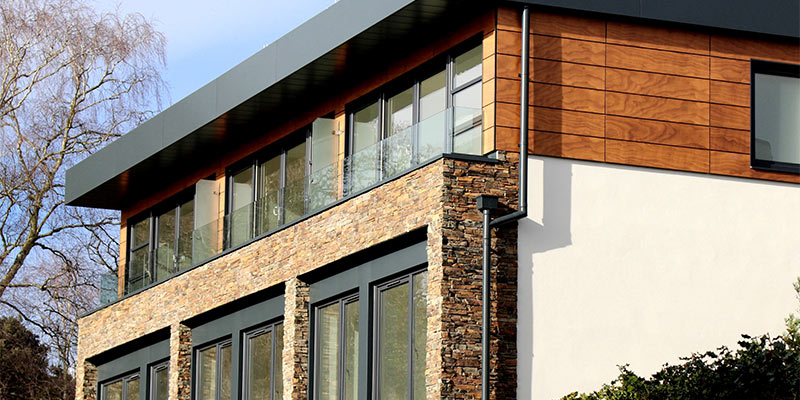
You have a great deal of control over your energy efficiency when you’re constructing a new home from the ground up. While your options are limited with an existing structure, they’re nearly boundless when you begin from the foundation up. Investing more in smarter building techniques and installations now will help you enjoy energy savings throughout the life of your home.
Create a Well-Sealed Envelope
Image via Flickr by jmrodri
If your home is constructed as a sealed envelope, you can keep heating and cooling inside, maximizing your energy efficiency. This can also help protect you from allergens and pollutants that may enter from outside. Your building envelope should include air sealing around windows, doors, vents, ducts, wiring, and pipes. Walls and ceilings should be insulated with a continuous layer of rigid foam.
Install an Energy Efficient HVAC System
While you can upgrade some elements later, it’s much easier to maximize the efficiency of your HVAC system as you’re constructing your home. Have an HVAC professional inspect your home to determine the proper sizing for your unit and ductwork. An HVAC system that’s too large or too small will use more energy than necessary. Place your furnace and water heater so they can vent heat directly outside. Insulate your ducts as they’re installed to prevent heating or cooling losses.
Equip Your Kitchen with Energy Star Appliances
Energy Star appliances are the most efficient choice for your home. An Energy Star refrigerator uses 20 percent less energy, while Energy Star dishwashers are 10 percent more efficient than their conventional counterparts. Look for the Energy Star rating on your ventilation fan above your cooking area; you can decrease your energy use by as much as 70 percent! Your home appliances stay with you for a long time, so it’s worthwhile to invest in higher quality options upfront.
Consult a Compass
Evaluate your lot carefully to determine the best placement for your home. A west-facing home is the least efficient option, as it will get a great deal of sun exposure that makes it difficult to cool off in summer. It’s best to shade south- and west-facing windows. Keep this in mind as you consider tree placement and landscaping. In warm climates, it helps to tunnel summer breezes toward the home, while homes in a cool region do best with windbreaks to stop winter winds.
Create a Cool Roof
Cool roofs use a reflective material that will reflect rather than absorb sunlight. This minimizes heat from the roof and keeps your attic space cooler. You can find cool roofing materials in the form of shingles, tiles, and even paint. This is a particularly useful material in a warm climate, where keeping cool and minimizing air conditioning use are major concerns.
Keep an eye on energy efficiency throughout the building process when you’re constructing a new home. Cheap materials and quick shortcuts now will cost you down the road. Take the time to include all the necessary insulation and Energy Star features so you can enjoy low energy expenses for years to come.

